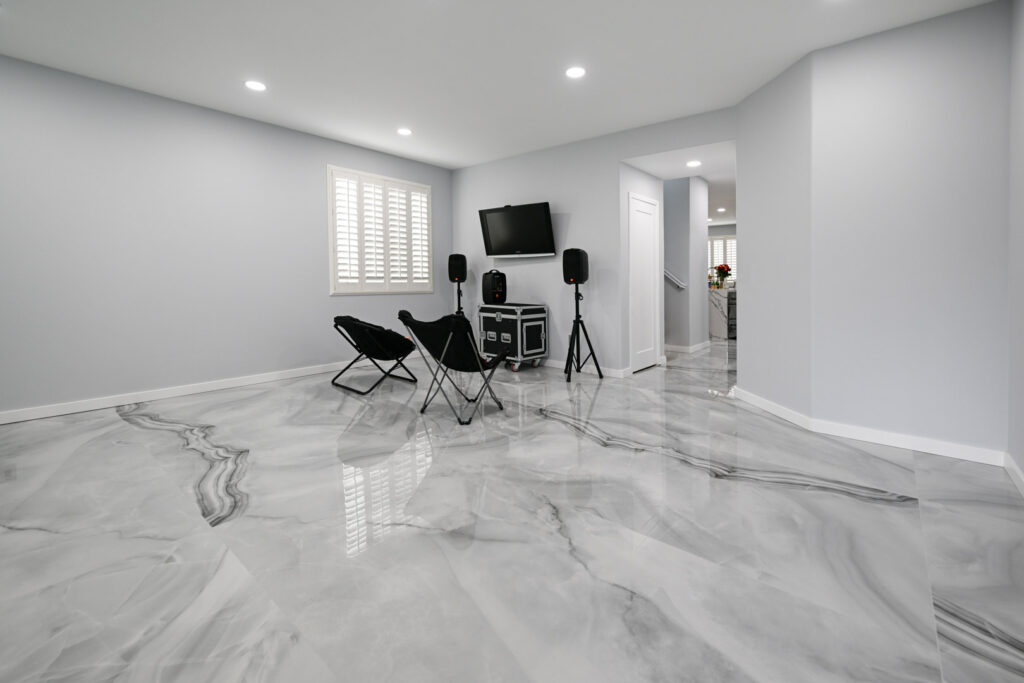Exploring the evolution of architectural design, the debate between open and closed floor plans remains a hot topic. While open layouts offer spaciousness and connectivity, closed designs provide privacy and defined spaces. Understanding the pros and cons of each empowers homeowners to make informed decisions that align with their lifestyle and preferences. The history of these floor plan styles dates back to early civilizations, reflecting societal values and practical needs. Today, this choice continues to shape how we live, work, and interact within our homes.
Understanding Open and Closed Floor Plans
Open Concept
Open concept layouts refer to spaces without walls separating key areas like the kitchen, living room, and dining area. This design promotes flow, natural light, and interaction among family members and guests.
In open floor plans, the absence of walls creates a sense of spaciousness and allows for versatile use of space. This layout is ideal for entertaining as it enables hosts to interact with guests while preparing meals in the kitchen.
Traditional Design
Traditional floor plans feature distinct rooms separated by walls, offering privacy and defined functions for each space. These layouts are preferred by individuals who value privacy or require designated areas for specific activities.
In traditional floor plan kitchens, the enclosed space provides a secluded environment for cooking, minimizing noise and distractions from other areas of the house. This setup is beneficial for individuals who enjoy cooking without interruptions.
Lifestyle Preferences
The decision between open and closed floor plans often boils down to personal preferences and lifestyle choices. Individuals who enjoy hosting gatherings may prefer open layouts for their ability to foster social interactions and inclusivity.
On the other hand, those who prioritize privacy or require quiet spaces for work or study may lean towards closed floor plans. For example, parents working from home may appreciate closed-off spaces that offer seclusion and minimize distractions during work hours.
Pros and Cons
Pros:
- Open floor plans create a sense of spaciousness and promote social interactions.
- Closed floor plans offer privacy and defined spaces for specific activities.
Cons:
- Open layouts can lack privacy and may lead to noise disturbances.
- Closed layouts may feel restrictive and limit natural light in interior spaces.
Pros of Open Floor Plans
Illusion of More Space
Creating a seamless visual experience is a key benefit of open floor plans. By eliminating walls, rooms flow into each other, giving the impression of a larger area. Design elements like color schemes and strategic furniture placement further enhance this spacious feel.
Increased Natural Light
Open layouts excel in maximizing natural light exposure from windows, brightening the entire space. The influx of sunlight not only illuminates the area but also positively impacts mood and well-being. Architectural features such as skylights can be incorporated to amplify the light in these open spaces.
Free-Flowing Socialization
Open floor plans promote easy movement and interaction among guests and family members. Hosting gatherings becomes more enjoyable as people can mingle freely without barriers. The informal ambiance nurtured by open layouts fosters social connections and a sense of togetherness.
Easier Communication
The absence of walls in open floor plans allows for effortless conversations across different areas of the home. This layout supports multitasking, enabling individuals to engage in discussions while carrying out other activities simultaneously. Moreover, keeping an eye on children or guests from various points in the home becomes convenient with this design.
Cons of Open Floor Plans
Increased Heating and Cooling Costs
Open floor plans present challenges in maintaining consistent temperatures due to the expansive, interconnected spaces. Higher energy bills may result from the inefficiency of heating and cooling such large areas. Strategic HVAC solutions are essential for effective climate control management.
Less Privacy
In open floor plans, individuals experience a trade-off with reduced personal space, leading to less privacy. Family members may find it challenging to have quiet moments or personal conversations. Consideration of privacy needs becomes crucial when selecting a layout.
Noise Travels
and easily travels through open spaces, creating distractions throughout the area. This can be particularly challenging for tasks requiring focus, like studying or working from home. Solutions like noise-canceling devices or soundproofing materials can help mitigate this issue.
Pros of Closed Floor Plans
Better Privacy
Closed floor plans provide designated areas for solitude and personal time, ensuring privacy within the household. Family members or guests can retreat to private spaces comfortably. This layout helps in maintaining boundaries in shared living situations.
Closed floor plans offer better noise management through sound insulation, reducing disturbances between rooms. Separate rooms help control noise levels during various activities. Design elements like carpets and curtains further minimize sound transmission.
Defined Spaces
Closed layouts offer clear boundaries for different functions, enhancing organization within the living space. Having specific areas for cooking, dining, and relaxing improves functionality. Defined spaces cater to individual preferences and lifestyles effectively.
Cons of Closed Floor Plans
Limited Natural Light
Closed floor plans can restrict light flow, resulting in darker interiors. The lack of windows may create a diminished ambiance within the space. To combat this issue, homeowners can employ design strategies like using mirrors and opting for lighter color schemes.
Restricted Social Interaction
Closed layouts can hinder social interaction, creating barriers that limit engagement among family members. This setup may lead to feelings of isolation when individuals are separated into different rooms during gatherings. Homeowners with closed floor plans must make deliberate efforts to plan social activities effectively.

Cost Implications of Both Layouts
Initial Costs
When comparing open and closed floor plans, it’s essential to consider the initial construction costs. Open layouts typically require fewer walls, resulting in lower material expenses. In contrast, closed layouts involve more walls, increasing both material and labor costs.
Long-Term Financial Factors
Looking beyond the initial outlay, long-term financial considerations play a crucial role in deciding between open and closed layouts. Open floor plans often offer better energy efficiency, leading to reduced utility bills over time. Maintenance expenses can vary; for instance, closed layouts may require more upkeep due to the complexity of multiple rooms.
Personal Preferences and Lifestyle Impact
The choice between open vs. closed floor plans is not merely about finances but also about personal preferences and lifestyle choices. Individuals who enjoy hosting gatherings may find open layouts more conducive to socializing, enhancing the overall value of their living space. On the other hand, those who prioritize privacy might prefer the defined spaces provided by closed layouts, adding value in terms of comfort and solitude.
Final Remarks
Considering the pros and cons of open versus closed floor plans, you now have a clearer understanding of how each layout can impact your living space. Open floor plans offer spaciousness and better light flow but may lack privacy, while closed floor plans provide defined areas and privacy but can feel cramped. The choice between the two ultimately depends on your lifestyle, preferences, and needs. Keep in mind the cost implications discussed to make an informed decision that suits your requirements best. Whether you opt for an open or closed floor plan, remember that personalizing your space to reflect your style and functionality is key to creating a home that truly feels like yours.
Design Your Perfect Floor Plan with Red White & Blue Construction!
Thinking about redesigning your floor plan? Your search ends here! Embark on an exciting journey to transform your Lafayette, CA home into the living space you’ve always dreamed of. With Red White & Blue Construction, every inch of your floor plan becomes a harmonious blend of beauty and functionality. Imagine innovative layouts that maximize your space’s potential, creating a natural flow that enhances both comfort and style. Whether you’re looking to optimize your current floor plan or dreaming up something entirely new, we’re here to bring your vision to life.
Our stellar reputation across the Bay Area speaks to our unwavering commitment to excellence, precision, and the highest standards of craftsmanship. We’re not just licensed contractors; we’re the creative minds behind your ideal living space. With transparent pricing and a client-first approach, you’re not just planning a floor—you’re laying the foundation for a whole new lifestyle. Choose Red White & Blue Construction and turn your home into a masterpiece. Design Your Perfect Floor Plan and connect with us today!
Disclaimer
The materials available on this website are for informational and entertainment purposes only and not to provide advice. You should obtain advice concerning any particular issue or problem from a professional. You should not act or refrain from acting based on any content included in this site without seeking legal or other professional advice. The information presented on this website may not reflect the most current building developments. No action should be taken in reliance on the information on this website. We disclaim all liability concerning actions taken or not taken based on any or all of the contents of this site to the fullest extent permitted by law.





